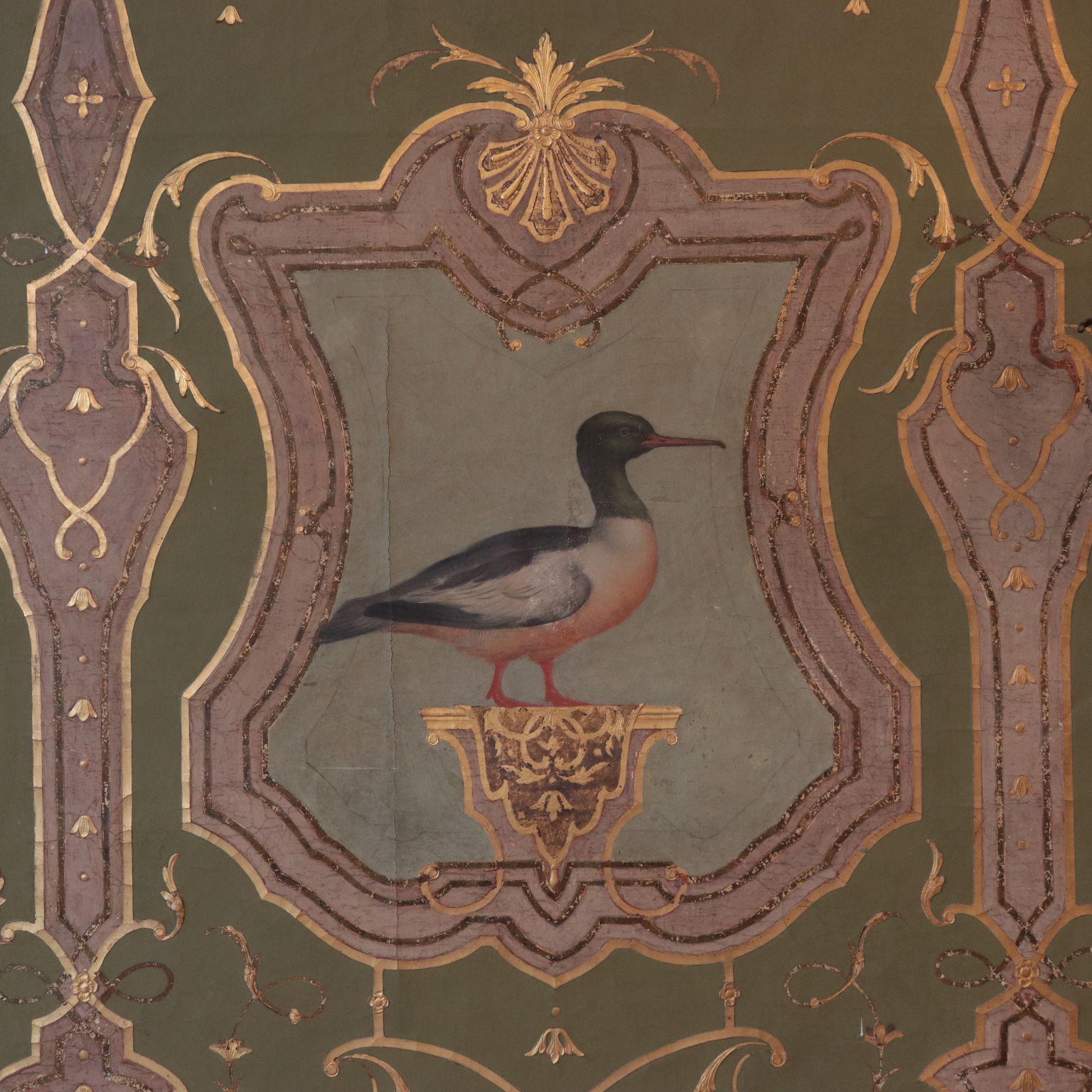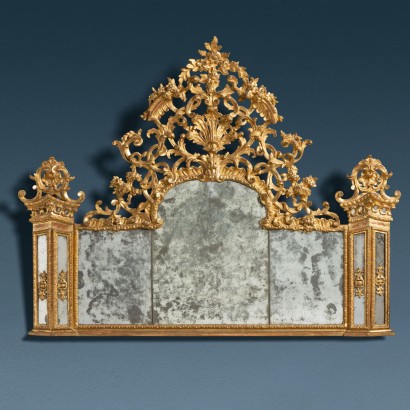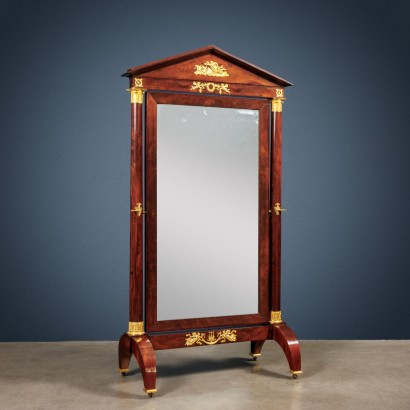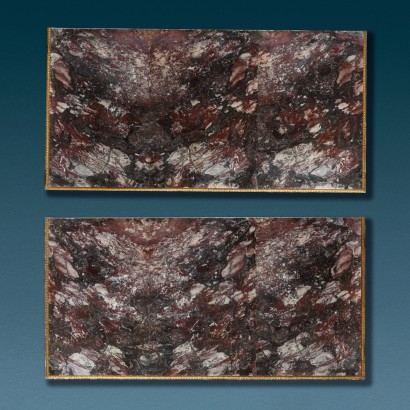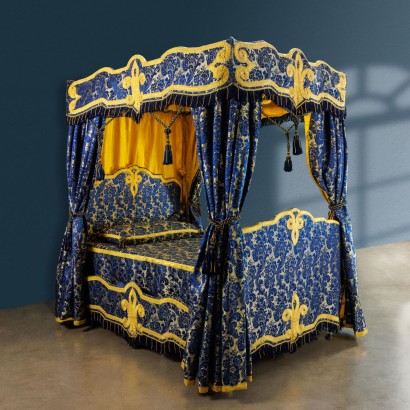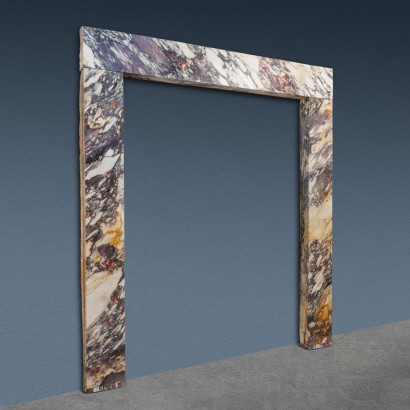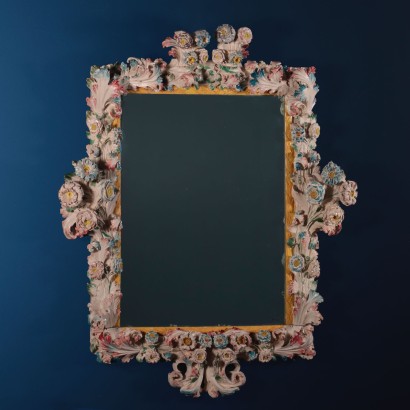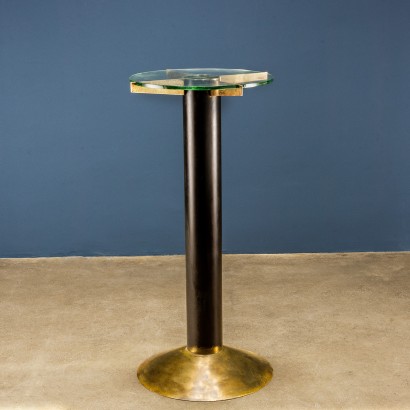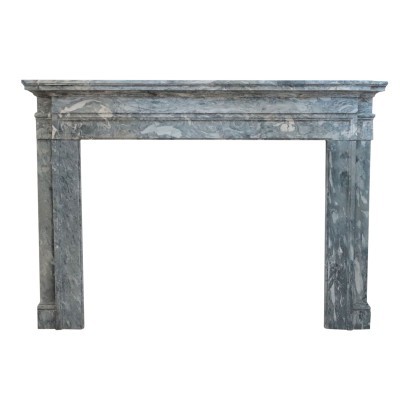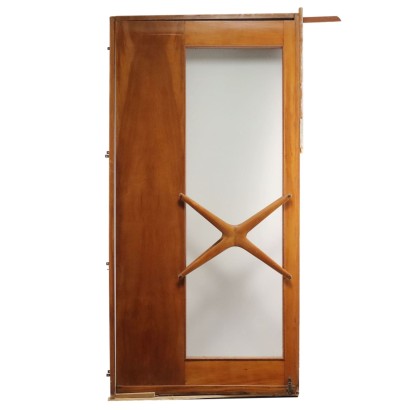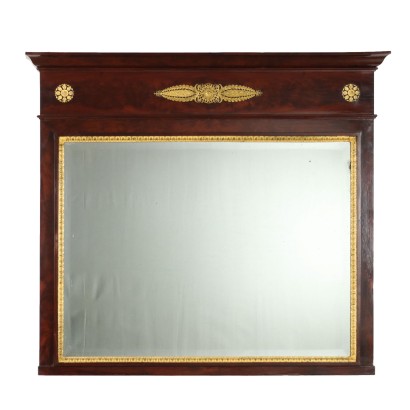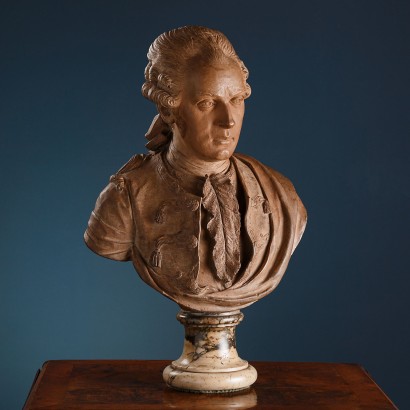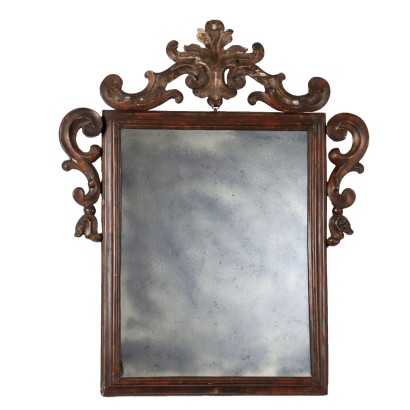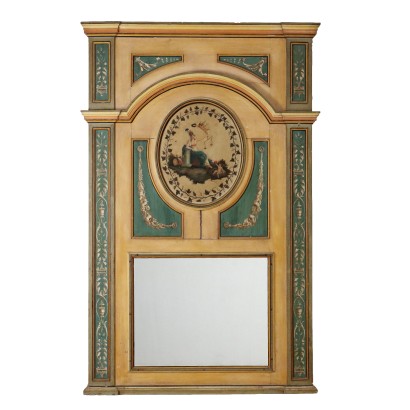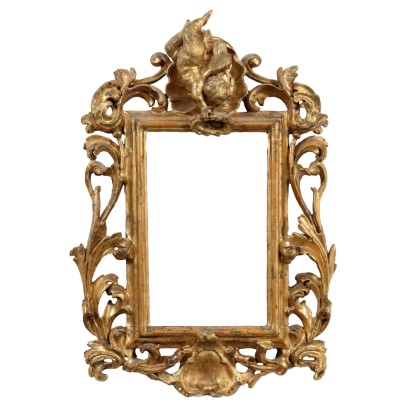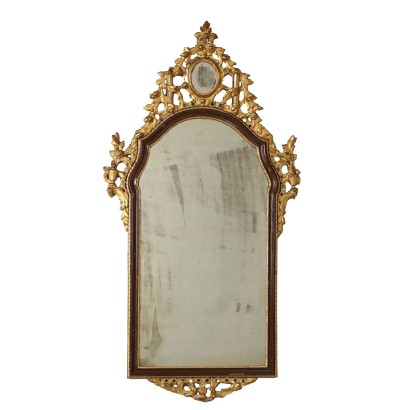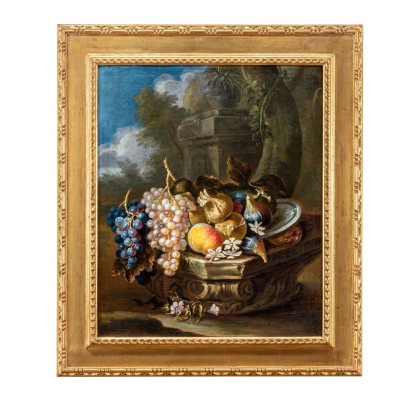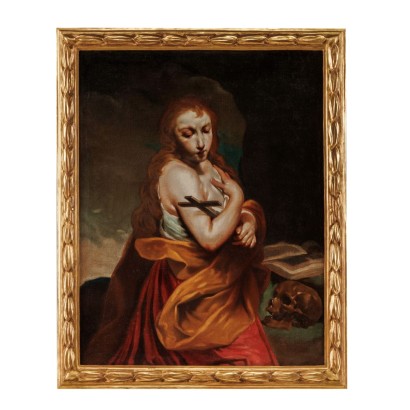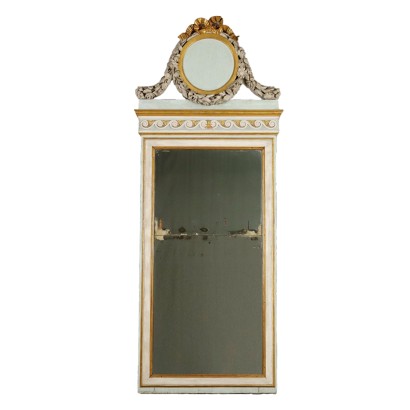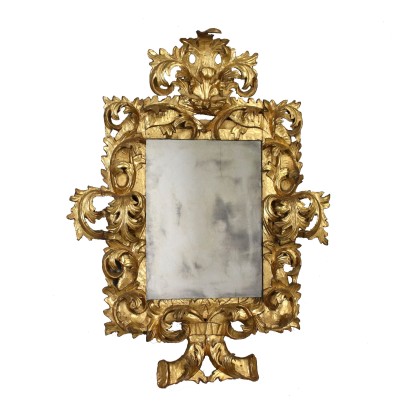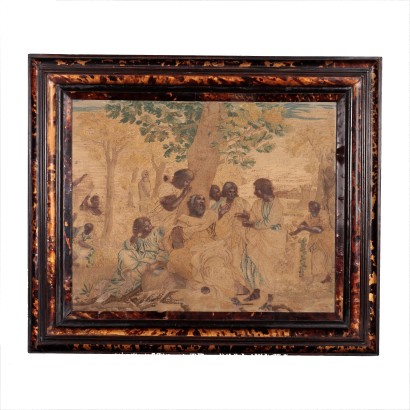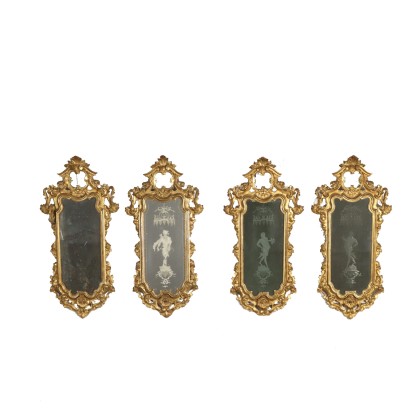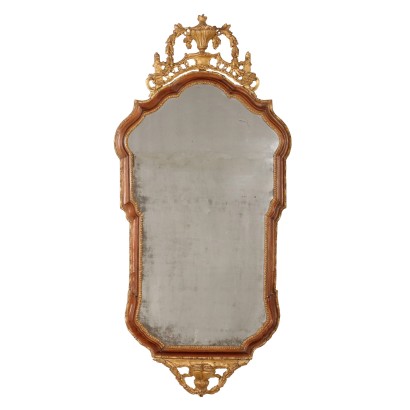Six tempera panels on paper - Early 18th century
Features
Early 18th century
Age: 18th Century / 1701 - 1800
Description
Boiserie made with six painted paper panels placed on canvas. The boiserie was made to measure for the modern apartment of the last property, inserting the six antique panels. The panels on a green background are decorated with Louis XIV-style rosy scrolls with lambrequins, characterized by intertwining golden and silver Berrain ribbons; the ribbons are made in relief with a stucco decoration that allows a engraving and a light carving of foliage and curls; the basic reserve, created to rest on a high plinth of a palace hall, is surmounted by the family crest held by two rampant lions, inside the coat of arms a rampant lion with a bifid tail holds a scimitar with its right paw . The higher reserves contain paintings of polychrome game birds resting on a decorated shelf.
Product Condition:
Product in fair condition showing some signs of wear.
Dimensions (cm):
Height: 319
Width: 125
Depth: 3
Maximum size (cm):
Width: 1640
Additional Information
Notes historical bibliographic
The rich reception rooms of the great palaces in ancient times were painted with frescoes but with the beginning of the seventeenth century, the spread of wall coverings also began. The covering had not only an aesthetic purpose, but also a functional one, it served to maintain a more constant temperature in poorly heated environments, the first most obvious examples were the use of tapestries or boiserie of fabrics, cloths and velvets. Completely wooden boiserie were also made, such as the Stube delle Alpi, or boiserie in which painted leathers were inserted and above all from the end of the seventeenth century. also boiserie designed to contain panels, in painted paper as in this case or mirrors. The papers such as the frescoes made it possible to create themed rooms, more flexible and with reduced costs compared to frescoes and stuccos. In this case we have a decoration probably dedicated to hunting, such as the room dedicated to the same subject in the Castle of Stupinigi. The Etruscan or Chinese rooms are also very popular. For these rooms painted papers were even imported directly from the East and then inserted into the wall coverings. An example in this regard is still present in Stupinigi, but also in Racconigi we can see a string of chinoiserie rooms covered with very high quality papers and furnished to theme. It goes without saying that since it is a decorative material and capable of being replaced, it has been well preserved only where it remained where it was, while it is mostly a few series of panels, sometimes badly preserved, those that have reached the antique market. The panels described here come close to a French decorative taste and therefore finds more comparisons with the Piedmontese production. In fact, the decoration in the intertwining made of golden and silver ribbons recalls the compositions of Jean Bérain, whose engravings spread from the end of the 17th century. influencing the decorations of fabrics, wall stuccoes, carvings, inlays etc. of the whole Louis XIV period, we must say at least until about 1740. The panels described and that French influence are attributed to those years. The fact that the famous actress Valentina Cortese has adapted them to her own bedroom in a twentieth-century apartment with three-meter ceilings should not, however, deceive us. The panels had been made without a shadow of a doubt for a much higher large hall, in fact the panels were inserted in a more complex boiserie that had to include a plinth and probably a top paneling, fitting into a wall of a height of at least 5-6 mt. The fact that they rested on a one meter high plinth is testified by the presence of the coats of arms which had to be not at the height of the knees but at least at the gaze of the observer, since the house was a detail to highlight. The upper closure then seems to leave room for a moved reserve that could house a second box. The state of conservation is interesting, except for the blue covered with a green background tempera, the rest is perfectly preserved to the point that it can be assumed that the color change was an aesthetic choice not a restoration. It must be said. To reinforce the observations made, that in Racconigi you can also see an example (in this case in fresco) of painting with similar birds in the west gallery, painted by the painters Cimati and Trifoglio.Age: 18th Century / 1701 - 1800
18th Century / 1701 - 1800Other customers have searched:
Se ti appassiona l'antiquariato, scopri tutte le presentazioni dei prodotti antichi più belli, eleganti e preziosi su FineArt by Di Mano In Mano
Leggi di più
Sull'antiquariato in generale dai un'occhiata anche a:Classic Monday: da un pezzo dei nostri magazzini alla storia dell'antiquariato
L'antiquariato dalla A alla Z: il Dizionario dell'Antiquariato
Il dizionario dell'antiquariato - Lastronatura
Il dizionario dell'antiquariato - Mascherone
Il dizionario dell'antiquariato - Natura morta
Il dizionario dell'antiquariato - Opificio
Il dizionario dell'antiquariato - Pastiglia
Il dizionario dell'antiquariato - Savonarola
Il dizionario dell'antiquariato - Rosone
Infine, dai un'occhiata alle nostre rubriche di divulgazione sulla storia delle arti decorative e d'arredo:
Epoche
Lavorazioni e tecniche
Mostre ed Eventi
Protagonisti
Product availability
The product can be seen at Cambiago
Immediate availability
Ready for delivery within 2 working days from ordering the product.

